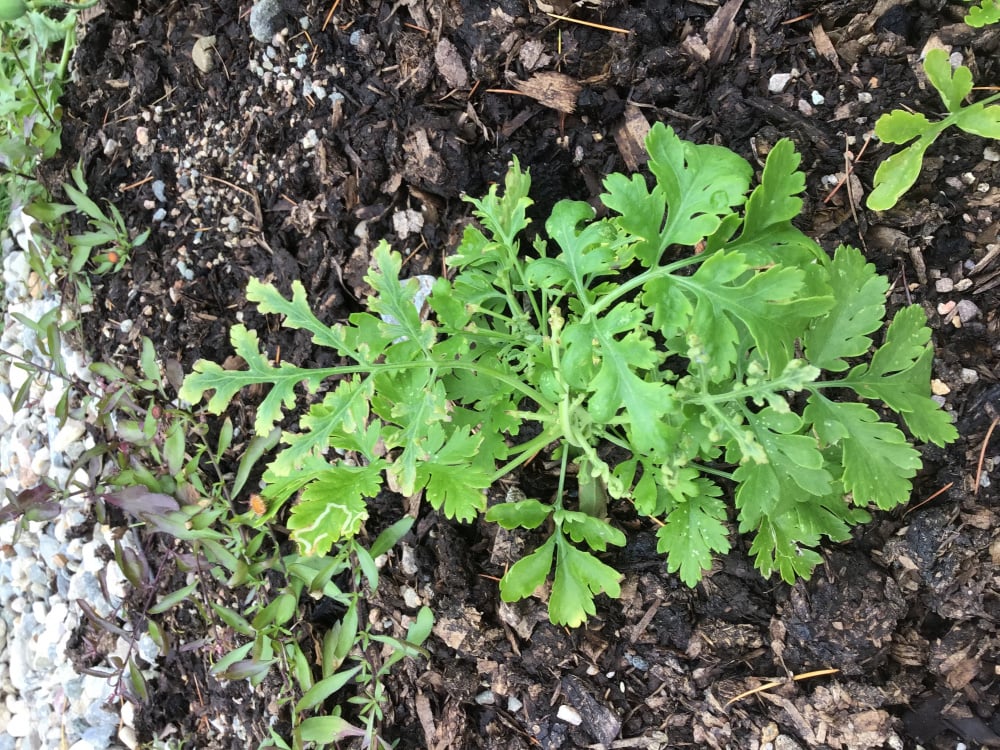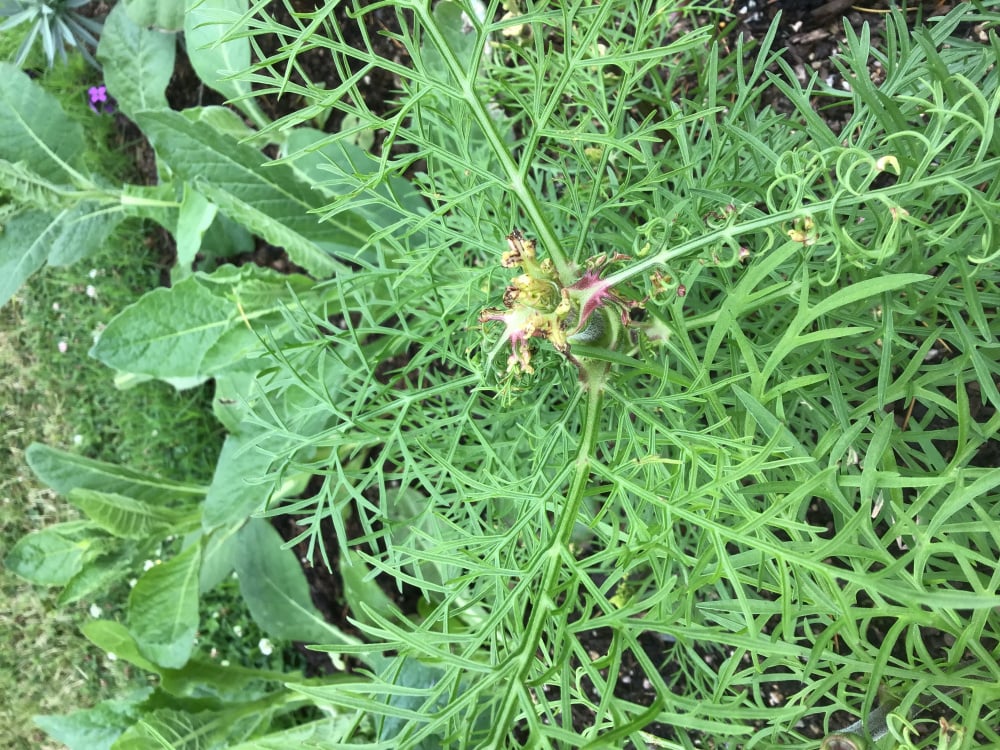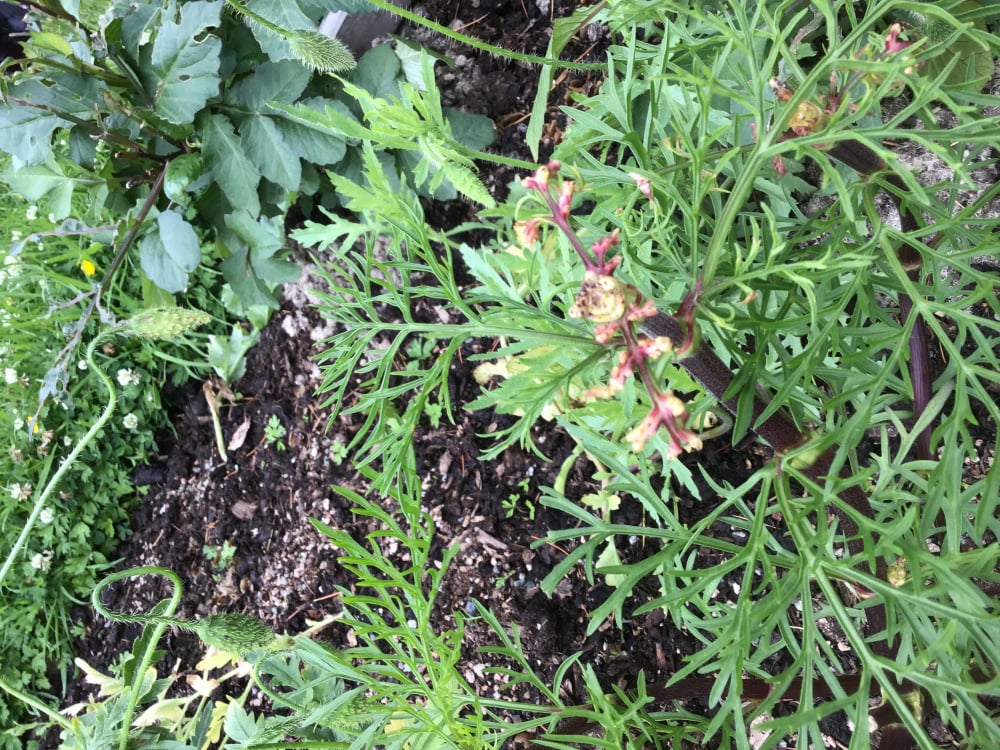This Forum will close on Wednesday 27 March, 2024. Please refer to the announcement on the Discussions page for further detail.
Cosmos problems
I have planted young cosmos plants in a thick 

 compost layer in a new no dig bed.The tops of the plants have gone scaly and strange. I’ve noticed the growth on the top of my feverfew plants are thickening and similar. Does anyone know why this might be happening. Is it a disease or might the compost ( which is supposed to be an organic mulch which I bought in) the problem although other plants in the bed are ok. I grew these plants from seed and others in the batch planted elsewhere seem fine.
compost layer in a new no dig bed.The tops of the plants have gone scaly and strange. I’ve noticed the growth on the top of my feverfew plants are thickening and similar. Does anyone know why this might be happening. Is it a disease or might the compost ( which is supposed to be an organic mulch which I bought in) the problem although other plants in the bed are ok. I grew these plants from seed and others in the batch planted elsewhere seem fine.


 compost layer in a new no dig bed.The tops of the plants have gone scaly and strange. I’ve noticed the growth on the top of my feverfew plants are thickening and similar. Does anyone know why this might be happening. Is it a disease or might the compost ( which is supposed to be an organic mulch which I bought in) the problem although other plants in the bed are ok. I grew these plants from seed and others in the batch planted elsewhere seem fine.
compost layer in a new no dig bed.The tops of the plants have gone scaly and strange. I’ve noticed the growth on the top of my feverfew plants are thickening and similar. Does anyone know why this might be happening. Is it a disease or might the compost ( which is supposed to be an organic mulch which I bought in) the problem although other plants in the bed are ok. I grew these plants from seed and others in the batch planted elsewhere seem fine. 0
Posts
I think that it's something in the mulch that is affecting the cosmos etc, with luck someone can confirm that's the case.
From the photos it looks like just the top growth has been damaged which would happen if weedkiller had been used in the vicinity and some had blown onto the plants.
Billericay - Essex
Knowledge is knowing that a tomato is a fruit.
Wisdom is not putting it in a fruit salad.
There seem to be a lot of issues this year in particular regarding peat-free composts, manure and mulches.
Not good news for us gardeners!
Billericay - Essex
Knowledge is knowing that a tomato is a fruit.
Wisdom is not putting it in a fruit salad.